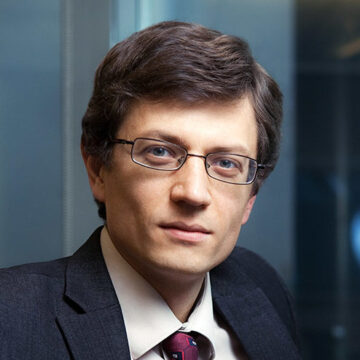This lack of direction in the economic sphere is not just a phenomenon of the past several years – it seems to have set in after the crisis of 2008 shattered the previous paradigm of the seemingly seamless integration of Russia into the world’s financial markets and the strong growth performance driven by high oil prices.
Which way to take after the oil price collapse? The Western model greatly discredited in the 1990s appears unpalatable for the broader populace, while the Asian model is viewed with a dosage of distrust by the elites. Just as Russia after the dissolution of the USSR threw itself headlong into economic cooperation with Europe in the 1990s, so too the latest turn to the East is taking place under pressure and in haphazard fashion. There needs to be an anchor, a vision that overcomes the divides within the country and offers a way of integration into the world economy that surmounts the decades-long pattern of disorientation between East and West.
That kind of vision may be represented by the Eurasian school of thought that emerged nearly a century ago and that seeks to base Russia’s development path on the basis of its idiosyncratic traits, most notably its geography, it history, cultural and economic traditions. The core philosophy of this school of thought is that for Russia to be successful in its economic exploits it needs to take advantage of its geographical position between Europe and Asia in order to benefit from rising economic interaction between these centers of the global economy. In today’s circumstances a Eurasian model of economic modernization could be predicated on the following key features:
— Integration into the world economy: combining integration efforts in both Europe and Asia as a way to facilitate greater trade and investment flows in all of Eurasia, with Russia being one of the key potential beneficiaries in intermediating the rise in economic activity between the likes of China, Japan, Korea, ASEAN on the one hand and Europe on the other. In this respect, the Eurasian integration process has been greatly bolstered by China’s Silk Road project, which Russia will seek to support.
— Eurasian integration in the “near abroad”: the more successful Russia is in promoting greater economic integration in the post-Soviet space, the greater its capability to attract trade and investment flows into Eurasia. A more integrated Eurasian economic space will be in a stronger bargaining position to negotiate alliances with other trading blocks and to intermediate the rising economic interaction between Europe and Asia.
— “Open regionalism” and prioritizing multilateralism: in the stand-off between regionalism and multilateralism, Russia should accord greater priority to supporting global international organizations such as the WTO in reinforcing international norms that limit the scale of preferential treatment and discrimination in the world economy. The formation of trading blocks in Eurasia needs to comply with the principles of “open regionalism” of the WTO.
— Asian Industrial policy: a policy that instead of an exclusive emphasis on import-substitution and weak currency (as was the case in the Latin American model of industrial policy) prioritizes export-promotion. This is precisely the area where Asia’s model of industrial policy could serve as a guide, in particular the model pursued by South Korea, where sunset clauses were used for state support to companies, which was in turn conditional on the attainment of a certain market share abroad.
— European stabilization instruments/anchors: in terms of financial stability Russia could emulate the Western system of economic rules, most notably fiscal and monetary rules. With respect to monetary policy this implies greater prioritization of lower inflation, while in the fiscal sphere Russia could introduce ceilings on the level of the non-oil budget deficit as well as on the overall level of public debt.
— Oil and gas sector: the oil and gas reserves could be used as a tool to promote greater competition between Europe and Asia to forge trade and investment alliances with Russia. Russia could also take advantage of its significant reserves in the Far East to promote greater competition between China, Japan and South Korea for access to these resources in return for greater cooperation in economic sphere.
In the end, Russia’s Eurasian model of economic modernization could be based in part on Asia’s experience in growth promotion (including via industrial policy) as well as Europe’s experience in securing financial and broader economic stability via a system of economic policy rules.
Russia’s economic diplomacy will need to promote greater competition between European and Asian suppliers for access to Russia’s large domestic market, while Eurasian integration will dovetail the Chinese efforts to forge ties with Europe via the Silk Road project. What is missing thus far is a competitive system of production at the micro-level of companies and industries – one of the keys to success could be greater integration of Russia’s vanguard companies with Asian and European corporate leaders via joint ventures, strategic and technological alliances.










